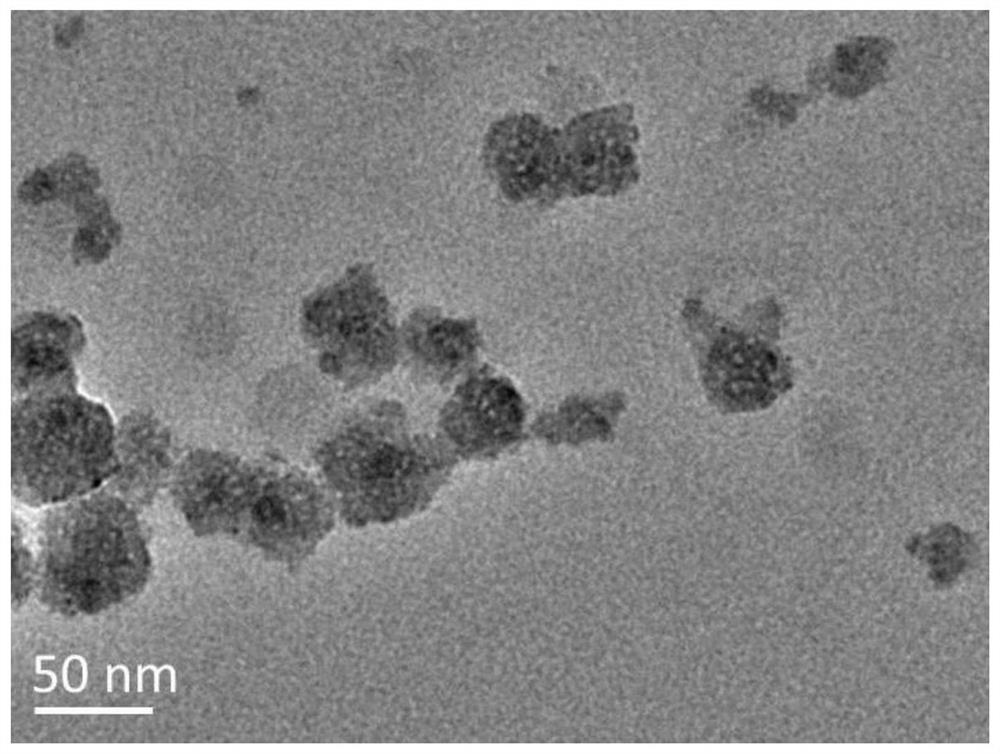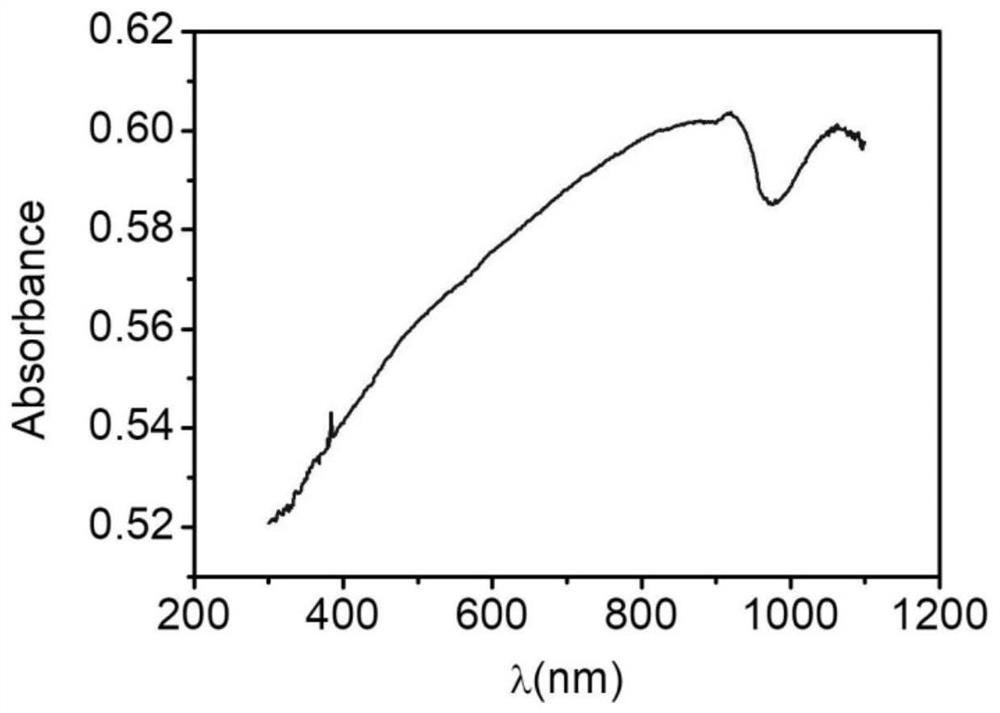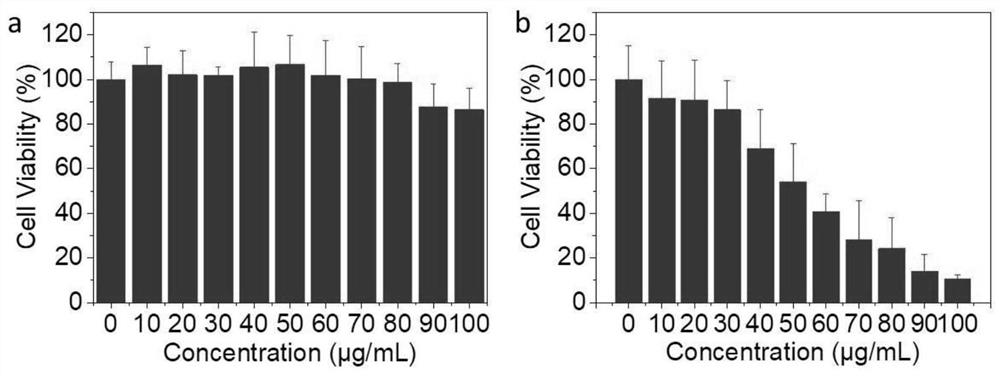A tumor-targeting photothermal agent, its preparation method and application
A tumor-targeting, photothermal technology, applied in the field of nanomaterials, to achieve the effects of inducing apoptosis, strong absorption, and high photothermal conversion efficiency
- Summary
- Abstract
- Description
- Claims
- Application Information
AI Technical Summary
Problems solved by technology
Method used
Image
Examples
Embodiment 1
[0024] [Example 1] Synthesis of tumor-targeting photothermal agent 1:
[0025] (1) Molybdenum telluride crystals were milled in a high-speed ball mill for 48 h at a speed of 400 rpm.
[0026] (2) Use a cell pulverizer to evenly disperse the milled powder in deionized water. The pulverization time is 12 h and the temperature is 0-4 o c.
[0027] (3) Molybdenum telluride dispersed in water and HS-PEG-cRGD (Mn = 25.7 kg / mol) were mixed and stirred for 48 h at a mass ratio of 1:1, and then centrifuged at 8000 rpm to obtain the biophase MoTe with excellent capacitance 2 nanoflakes.
[0028] (4) Characterize the material structure by transmission electron microscopy ( figure 1 ), and the obtained product was stored at -18°C in the dark.
Embodiment 2
[0029] [Example 2] UV-Vis absorption spectrum of tumor-targeting photothermal agent 1
[0030] MoTe 2 The UV-Vis absorption spectra of aqueous nanoflakes were measured by a UV-Vis spectrophotometer (ThermoScientific, Waltham, MA). The result is as figure 2 As shown, MoTe 2 The UV-vis absorption spectrum of nanoflakes shows strong near-infrared absorption at 800–950 nm, thus proving that MoTe 2 Nanoflakes are a compound with photothermal conversion potential, and the optimal absorption wavelength range is 800-950 nm.
Embodiment 3
[0031] [Example 3] Tumor-targeted photothermal agent 1 acts on mouse breast cancer cells
[0032] Mouse breast cancer cells were seeded in two 96-well plates at a density of 6000 cells / well, and cultured with 0.1 ml of medium for 24 hours. Then, the medium was prepared into different concentrations of MoTe 2 The PBS solution of nanoflakes was added to each well respectively. Incubate at 37°C for 48 hours under dark conditions. The dark toxicity group continued to culture for 24 hours under the condition of avoiding light. To assess the phototoxicity of the material, the material that had not been endocytosed was replaced with fresh medium after 6 hours of culture, and then irradiated with a NIR laser. Near-infrared light at 808 nm with a power of 1 W cm per well -1 Laser irradiation for 1 min. The incubation was continued for another 24 hours. Then, add 20 µl of MTT (MTT dissolved in 5 mg / ml PBS buffer) to each well. After co-cultivation for 4 hours, the medium was aspi...
PUM
 Login to View More
Login to View More Abstract
Description
Claims
Application Information
 Login to View More
Login to View More - Generate Ideas
- Intellectual Property
- Life Sciences
- Materials
- Tech Scout
- Unparalleled Data Quality
- Higher Quality Content
- 60% Fewer Hallucinations
Browse by: Latest US Patents, China's latest patents, Technical Efficacy Thesaurus, Application Domain, Technology Topic, Popular Technical Reports.
© 2025 PatSnap. All rights reserved.Legal|Privacy policy|Modern Slavery Act Transparency Statement|Sitemap|About US| Contact US: help@patsnap.com



